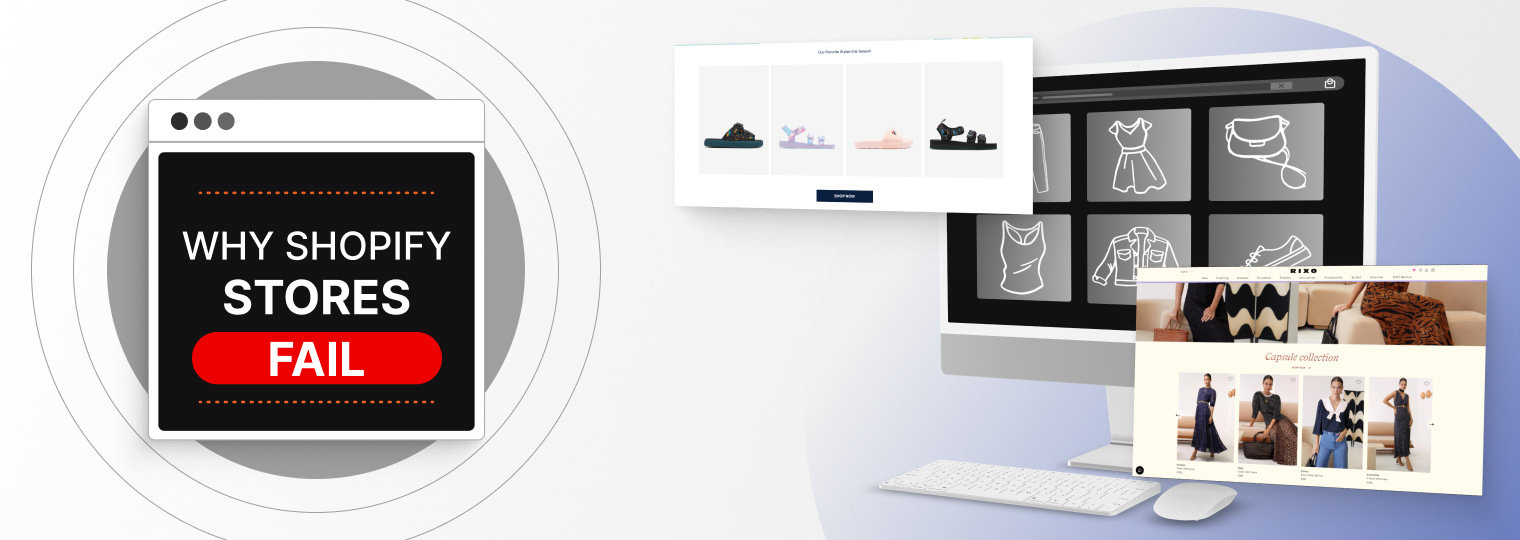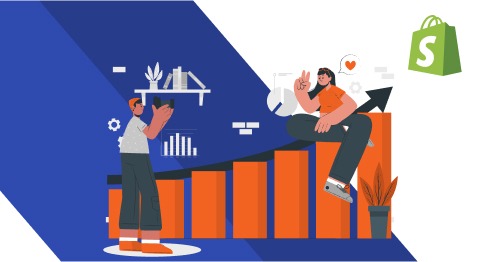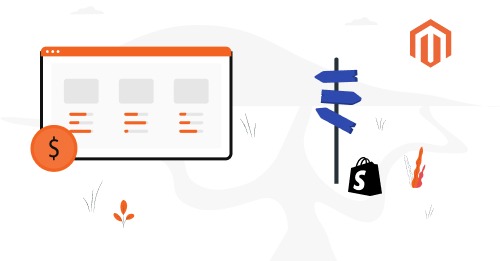Shopify has established itself as a superior tool to build and thrive an online store. Millions of ecommerce businesses across sectors and niches set up their operations on this platform and succeed thanks to its remarkable benefits.
Indeed, Shopify is extolled for its universality, unparalleled customer service, easy scalability, reasonable cost, mobile support, and other upsides. However, numerous Shopify stores do not attain prosperity.
Why do Shopify stores fail?
Before we start exploring the reasons, let’s identify how widespread the problem is.
In fact, the success rates of Shopify-powered businesses range from 5% to 10%. In other words, more than 90% of companies do not reach their goals, which is quite frustrating. Therefore, looking for a decent background of how to make a Shopify store successful makes sense.
The article examines why 95% of Shopify stores fail, shows the 5 common killers of eShop sales, highlights studies of the most outstanding Shopify cases, and suggests ways to avoid the common pitfalls on your way to a flourishing eCommerce business.
- Why Do Shopify Stores Fail?
- Why Shopify is Bad and Why This Opinion Is False?
- How to Avoid Popular 10 Shopify Issues and Don’t Fail At The Very Beginning
- Most Successful Shopify Sites
- Key Takeaways
Briefly About the Main Thing
Did you know that 99% of Shopify stores do not rank on the first page of Google when users search for items with multiple specific details simultaneously?
Get a Shopify Expert Consultation
Let our senior Shopify developer analyze your store and provide a comprehensive plan for eCommerce optimization to make your website stand out.

Why Do Shopify Stores Fail?
You have decided to launch your own Shopify store or figured out that your eShop is not as successful as it should be.
“Why isn’t my Shopify store growing? Why do Shopify stores fail? How can I increase sales?”
Owners of Shopify stores struggle to discover the best approach to address these issues. eCommerce businesses are exploding like mushrooms.
Knowing what percent of Shopify stores fail before the eShop launch will be valuable.
95 percent of them fail, while just 5 percent of them arrive at their goal of success.
Why Shopify is Bad and Why This Opinion Is False?
We aim to be transparent, provide trustworthy guidelines, and rescue online stores from the most common eCommerce mistakes. Let’s begin with the main point: most people tend to blame anyone and everything but themselves.
Similarly, upon encountering initial failures in online sales, online store owners often blame the Shopify platform. Some may even migrate to a different CMS, yet such actions rarely yield results. Platforms/CMSs are merely tools that require thorough work and optimization.
In this article, we’ll highlight the mistakes of a randomly selected real online store, which resulted from inappropriate site configuration rather than any shortcomings of the Shopify platform itself.
The answer to the question “How many Shopify stores are successful?” is quite simple: as many are willing to invest in the proper configuration of a highly flexible Shopify system with rich functionality. Our experts help you avoid significant Shopify store setup mistakes and increase online sales.
Shopify Success Rate
Google or AI will offer you a variety of answers to the question: “How many Shopify stores are successful?”. Here are the most popular ones:
- The Shopify success rate of eCommerce stores ranges from 5% to 10%. Only 5 to 10 out of every 100 Shopify-powered enterprises achieve success.
- Another claim, seemingly based on Shopify statistics, suggests that 81% of Shopify merchants remain active and profitable after two years.
It’s nothing but a myth. Just because you’ve opted for Shopify to build an online store doesn’t mean this platform will only grant you a 5-10% chance of success regardless of other circumstances. The same principle applies to other eCommerce platforms like Magento, Shopware, and so on. It’s akin to claiming that I didn’t lose weight because the statistics of the gym I selected indicate that only 5-10% of visitors achieved success.
Shopify Is Bad: Mythbusting by WebMeridian Experts
We randomly selected an online store built on the Shopify platform for clarity and transparency. It was thoroughly analyzed by our eCommerce experts.
Winner-website:
https://*******clothing.com/
- An online clothing boutique
- Built with Shopify
- 813 pages (not a large site)

Using the example of this real store, we will highlight the top 5 mistakes that kill traffic and sales and reduce the chances of success. Our team aim to demonstrate that the primary reason for a low Shopify success rate is not that “Shopify is bad,” but rather that the platform is not configured properly.
In a nutshell, about the authors of this guide:
- Webster Webmeridian: eCommerce Expert and BDM with over 6 years of experience in business growth strategies. Webster has successfully spearheaded numerous projects aimed at optimizing online retail and significantly enhancing sales.
- Aleksei Tarasov is a certified Adobe Commerce Expert who excels in leading projects and is driven by a passion for effective communication and creative problem-solving, with more than 7 years of experience in IT project management.
Why will the recommendations of our experts help save your Shopify store? Because they have already assisted more than 500 stores in the eCommerce development industry over the past 5+ years. We conducted over 17 website audits for these mistakes in the past week alone. This guide is written for you, as the demand for such insights is evident. Let’s get started.
Killer #1 Structure of the Online Store
- Problem
The positioning of web pages in search results (traffic) and the user-friendliness of the site (sales) depend on the webshop structure for SEO. Organic Search is the primary traffic channel for online stores, and having the correct site structure is 50% of success in SEO. Ideally, your site should be accessible to all potential buyers through all possible relevant search queries.
The more detailed the search queries, the lower the competition. Google won’t display your site for “men’s white t-shirts” unless you have a specific page dedicated solely to men’s white t-shirts. A category containing all men’s t-shirts won’t be relevant in this scenario for search engines.
- Why Shopify is not to blame
Shopify provides all the necessary features for creating subcategories and implementing product filters effectively, offering the tools needed to optimize site structure for improved search visibility and user experience.
- Solutions
Here are the guidelines from our eCommerce experts on how to configure the structure of your online store properly, harnessing the power of the Shopify platform:
The online store structure should be as follows:
1) Category => t-shirts for men (gender)
- Subcategory => print t-shirts for men (style, gender) – 2nd level of detail
- Subcategory => men’s XL t-shirts (size, gender) – 2nd level of detail
- Subcategory => men’s white t-shirts (colour, gender) – 2nd level of detail
- Subcategory => men’s white v-neck t-shirt (colour, types of necklines, gender) – 3d level of detail
To establish the structure of online stores correctly, SEO filters are widely used. These filters enable the generation of separate pages for filtered products based on specific parameters (classifiers). The pages are then interlinked within the specific category. Each page has its own unique URL, metadata, and content. Search engines index these pages individually.
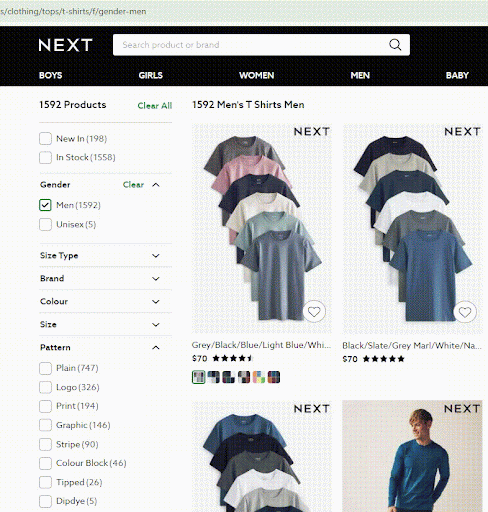
A Good Example of a Correct Structure and SEO Filters
Let’s get back to our case study (https://*******clothing.com/):
The site has filters, but they fail to generate separate pages for queries with specifications (men’s v-neck t-shirts).
Also, the site does not have separate subcategories for such queries.
As a result, the site is not visible on Google for the 2/3 of users’ searches.
It’s also quite common to set up filters that produce results with dynamic URLs (/?sort…). However, this is a mistake because search engines do not index such auto-generated pages as individual pages.
To make your website visible for different detailed search queries, you need to create the right structure for your online store.
- Collection and analysis of search queries (we study how users search for your products).
- We create a structure of relevant pages while adhering to the hierarchy (category, subcategory).
- We design an internal linking between pages.
Tired Of Being Buried In Search Results?
Unleash the power of the hottest SEO trends to make your products stand out.

WebMeridian expert’s recommendations:
- async, defer attribute for js scripts
- delay (or after the first action) loading third-party javascript
- image lazy loading
- optimize image sizes
Why does it matter?
WalMart showed a 2% increase in conversions for every 1 second of improvement to their page speed.
Amazon reported a 1% increase in revenue for every 100 milliseconds of improvement to their site speed.
Killer #3 Backlinks and Brand Mentions
- Problem
Like humans, search engines evaluate the authority of a web resource based on various factors.
- Links from other sites, brand mentions across the internet, and brand inquiries – all these factors influence the ranking of your site (search traffic).
- Links from other sites increase referral traffic.
- Content across social networks, communities, and other sites contributes to the frequency of brand inquiries.
The graph shows that the number of sites referring to *******clothing.com remains relatively stable over the year.
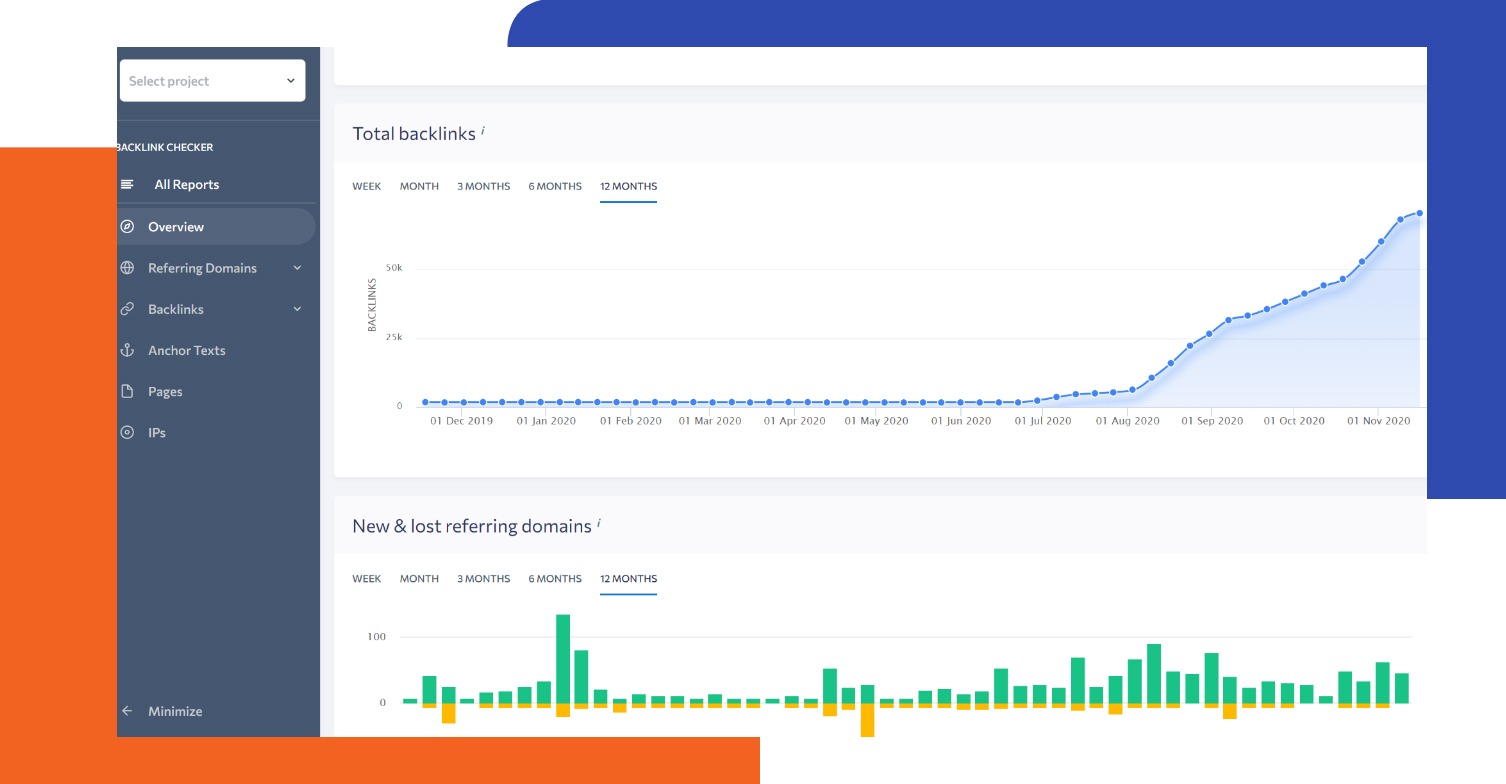
- Why Shopify is not to blame
Shopify is a platform for developing an online store that does not provide functionality to increase the site’s authority. Your marketing team should cover multiple areas of digital marketing & SEO, content marketing and promotion, and social media marketing.
- Solution
Place articles and reviews with links to your site, ensuring your brand is mentioned across various web resources.
- Your audience
- Site Credibility (Domain Rate, Authority, Trust)
- High traffic
Pro tip: Do it gradually (incrementally) to ensure that these actions maintain an organic nature.
Killer #4 Technical Issues
- Problem
Technical issues negatively impact:
Search results (SEO) => Your online presence
- drive up advertising costs by affecting metrics such as “Landing page experience,” which directly influences Ad Rank in advertising platforms;
- poorly optimized landing pages can result in lower ad visibility and higher costs per click;
- directly influence user behavior on the site, leading to reduced sales and conversions;
- negatively impact search engine optimization (SEO), affecting your online presence and visibility in search results;
- security vulnerabilities can expose sensitive customer data to potential breaches, eroding trust and damaging the reputation of the eCommerce business
To sum up, slow loading times, broken links, or checkout errors can frustrate users and drive them away from completing purchases. Therefore, addressing technical issues promptly is essential to maintain the effectiveness and profitability of an eCommerce site.
Getting back to our today’s example: https://*******clothing.com/ :
Mistake #1: Hidden header (text color = background color). Due to the title, the user decides within the first 3 seconds whether to continue viewing the page.

Mistake#2: Page pagination is not configured correctly => duplicate content

Mistake #3: Structured data is not configured
- Product snippets
- Merchant listings

Adding structured data enables search results that are more engaging to users and encourages them to interact more with your website, which is called rich results.
These technical mistakes are just the tip of the iceberg.
HEALTH SCORE is 45/100, but >80 is recommended.
- Why Shopify is not to blame
Shopify offers comprehensive functionality to customize Structured Data Markup, allowing you to configure and optimize your site’s structured data display. This feature lets you provide search engines with detailed information about your site’s content, enhancing its visibility and relevance in search results.
As a result of correct configuration, you can ensure that your site’s data is accurately interpreted by search engines, ultimately improving its organic search performance and driving more targeted traffic to your online store.
- Solutions
- Technical audit
- Applying audit recommendations
How often should a technical site audit be done?
- Before website launch
- After updates or changes in the code
- Once a year (preventive check-up)
Killer #5 Social Proofs
- Problem
91% of shoppers read at least one review before making a purchase.
54% of people have purchased a consumer-packaged good after seeing visual user-generated content (UGC) about it.
63% of consumers indicated they are likelier to purchase from a website with product ratings and reviews.
What about social proof in our case: https://*******clothing.com/?
Product cards have reviews, but this data is not displayed within categories, as seen in the example of Amazon. This is crucial because most of users initially engage with product categories before exploring individual product cards.
- Why Shopify is not to blame
To customize reviews (videos, review scores, etc.), simply set up the Helpful Product Reviews App, which automatically collects reviews with personalized review requests after purchase. This way, you can build loyalty and save time with ChatGPT.
- Solutions:
- Configure Review Snippet (Review, AggregateRating) Structured Data.
- Product cards in categories must include Social proof.
- Show how others use your product; video is a great way.
- Create a separate section where users can view FAQ about the product and also ask their own questions.
- Invite customers to submit reviews and receive a special reward. Ensure your incentives are truly worthwhile.
Our Point of View
Shopify is a flexible system with a wide range of features that require proper setup. You can manage everything yourself, provided you steer clear of common mistakes (which you now know) and stay updated to capitalize on trends and boost profits. Our experts have scrutinized 10 additional classic eCommerce mistakes. With this guide, you’ll rectify all the glitches in your business. If you lack the time or technical knowlanges to correctly configure Shopify, we’re here to audit your site and enhance your sales.
Don't Let Peak Seasons Overwhelm Your Site!
Say goodbye to site crashes during discount seasons. Hire Magento expert and Adobe Business Practitioner whose will audit and optimize your site for robust performance

How to Avoid Popular 10 Shopify Issues and Don’t Fail At The Very Beginning
The unfortunate fact is that most unsuccessful businesses started with incredible potential. So, why do Shopify stores fail?
Your Shopify store may grow without being difficult to do. You can make your Shopify store’s brand synonymous with success with a bit of perseverance, astute marketing, and original client retention techniques.
We’ll look at 10 common Shopify issues in-depth today that might potentially ruin your eCommerce business.
- Bad customer service
- Poor customer experience
- Lack of social proof
- Complicated checkout
- Subpar SEO
- Not concentrating on abandoned carts
- No defined branding
- Undervaluing repeat customers
- Poor selection of products
- Issues with a mobile-friendly website
Bad Customer Service
If website visitors are unhappy with your service, they can change to another brand. Studies show that 59% of customers will change companies in order to get superior customer service.
Customer service is essential since it serves as the public face of your company. It’s how you communicate with your clients and establish trust with them. It also relates to how you respond to issues and complaints.
The easiest method to prevent this as a Shopify business owner is to ask yourself the key questions:
- Is customer service responsive quickly?
- Is the customer service agent kind and accommodating?
- Is customer service available round-the-clock?
- Do you allow customers to contact you through all social media platforms?
You must ensure excellent customer service if you want to prosper. You must respond quickly and offer assistance. In order to overcome Shopify challenges, you must also go above and beyond.
Useful Article:
Visualise a potential consumer entering your business only to find typos, wildly different typefaces throughout the site, and poor or even damaged pictures. This is no longer acceptable for the majority of online shoppers and will discourage them from shopping at your site.
It would be best if you emphasized your website’s aesthetic and made sure that each page is free of errors and displays material correctly. Your website’s design is built based on your physical business, and it greatly affects how people view your brand. In fact, studies show that assessments of a store’s legitimacy are made of it 75% based on the general layout of its website.
The overall quality of a website determines a store’s trustworthiness in 75 percent of cases.
To Sum UP:
- Paying attention to the design of your shop is one of the most crucial things you can do. Your business should have a pleasing appearance and be easy to navigate. It should have a polished appearance and provide a great first impression.
- Any typos, mismatched product descriptions, flawed photos, broken buttons, etc., must be found and removed.
- Your product descriptions are a further consideration. Your descriptions need to be captivating and crystal clear. They should describe your product to customers and explain why they need it.
- If your budget permits it, think about creating a unique Shopify theme. The majority of prosperous Shopify websites use a customised design to keep their shops current. Making a whole new theme may help advance your Shopify shop. Additionally, a website that is specifically tailored to represent your business identity will leave visitors with a better first impression, along with making sure that your shop is actually unique.
- Additionally, Shopify shops frequently make the error of failing to develop a USP (USP). Your store’s USP is what sets it apart from all the other stores out there. It distinguishes your store as unique. Your unique selling point may come from a variety of sources, such as:
-
- offering more competitive costs than your rivals.
- supplying superior goods that your competitors don’t have.
- providing a superior consumer experience than your rivals.
- utilising a Shopify delivery app to provide same-day or on-demand delivery.
Don’t Throughout Website Appearance & Poor Customer Experience

The greatest Shopify stores are active on social media. They communicate with their clients on social media and advertise their goods there.
A multipurpose tool, social media, may be utilised in various ways. It may be used, for instance, to cultivate client connections, provide leads, and increase foot traffic to your business.
Let’s suppose Tom is a customer looking to buy a high-end item from your shop. He is cautious about making the purchase, though, because there hasn’t been any previous consumer feedback. You run the risk of losing customers as a result.
On the other hand, client referrals might increase your sales more than Facebook advertisements.
Lack of Social Proof
Supercharge Your Store for the Sales Rush!
Ensure peak season success. Our Adobe Business Practitioners conduct site audits to optimize your eCommerce weaknesses.
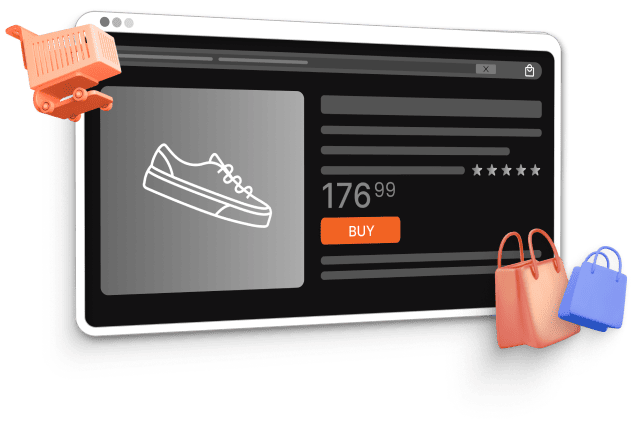
Encourage your consumers to write a review without being intrusive. If you need to, give them rewards like gift cards or points. Other social evidence for your Shopify store, outside reviews and ratings, may be:
- Influencer recommendation: Social media influencers with a dedicated following can aid in your company’s growth.
- User-generated content may give clients the extra certainty they require to move from thinking they might need something to feeling like they must have it.
- Social media counts: By providing statistics like social media reach, engagement rate, etc., you may demonstrate your current trustworthiness.
You’ve worked very hard to encourage visitors to visit your eCommerce site. However, a problematic checkout experience will likely cause 1 out of every 5 customers to abandon their purchases.
Your prospective client Tom will make the pricey buy after finally deciding to take the risk. Other problems, though, are preventing the deal from going through:
- Account creation is required before checking out.
- Moving consumers between windows and offering them fewer payment alternatives
- Hidden fees or charges
- Checkout that is not mobile-friendly
The greatest choice for customers is, without a doubt, a one-page checkout that solves a wide range of Shopify challenges. With an in-chat checkout solution, you can advance the situation.
Complicated Checkout
Pay-per-click advertisements are ignored by approximately 80% of users, according to HubSpot. Therefore, be confident that your SEO approach is sound.
- You may earn 71.33 percent of all clicks if you can rank on the first page of Google.
- In comparison, just 0.78 percent of Google users would click on your business if it is moved to the second page.
Although SEO is keyword-driven, ranking is improved by doing more than just sprinkling keywords throughout your content. So how can you ensure your website shows up in the top SERP?
- Make a basic website that is search engine friendly.
- Boost product pages
- Post lengthy blog content (with the right keywords, of course)
- Make personalised research reports
- Create backlinks to your store.
Page load speed is another Shopify issue you need to take into account. The speed at which consumers can access your Shopify store will also have a significant impact on whether or not they decide to make a purchase. Page load speed is the length of time it takes for a website to load. It is time it takes for a webpage to load once a user clicks on a link fully. Your website load time should ideally be under three seconds.
Non-optimised website | SEO, Performance, Speed, etc.

Let’s dive deeper into how many Shopify stores fail… fail to build a brand. As they don’t invest in branding, their stores are unmemorable. Branding is crucial since it increases consumer loyalty and makes your business more identifiable.
In the end, having no sales on your Shopify store may be the consequence of your failure to develop a distinctive brand. 59 per cent of consumers prefer to purchase goods from recognisable brands.
According to studies, consumers need between five and seven touchpoints with a brand before they truly remember it. Our logical conclusion from this is that branding must be consistent. As a result, we’ve compiled the following top advice for avoiding Shopify’s brand-building issues:
- Presenting the same picture across all platforms is only one aspect of consistent branding. Additionally, honesty and a unified message are important.
- Your brand’s identity must come from authenticity and clarify your concept. Customers can’t help but consider what your brand stands for, why buying from you is advantageous for them, and why they can trust you with their money. In any other case, you run the danger of being another Shopify failure tale.
- Designing a distinctive brand name, a catchy logo, and an outstanding selling proposition are the first steps in branding.
- Don’t allow catering to several target audiences to weaken your brand. Running separate (or, worse yet, fragmented) marketing initiatives will be a senseless waste of resources and fail to establish a strong, identifiable brand.
- Customers are often more likely to purchase from a brand if their purchase offers value beyond simply their own advantage. In many respects, consumers favour companies that give back to the community.
No Defined Branding

About 75% of those who leave their carts unattended want to come back. In other words, recovering an abandoned cart is significantly less expensive than bringing in a new customer.
In order to recover lost money, sending cart recovery emails has shown to be quite beneficial. According to studies, these emails are opened by 45% of recipients, clicked on by 21%, and bought by 11%. The email checklist consists of:
- A compact but an eye-catching topic line
- Attractive representations of the items in the cart
- The full cost of the item, excluding any additional fees
- Free delivery or rewards from loyalty programs
- A thorough refund and return policy
- Ratings, reviews, and client testimonials are examples of social proof.
- A large CTA button pointing to the shopping basket
Disregarding Abandoned Carts

Repeat clients are the backbone of a successful company; therefore, as a business owner, you must value them.
Consequently, companies work hard to give them the most value possible. In the beginning, Uber was so alluring because of its referral scheme. The business gave new riders and referrers each up to $20.
Here, we provide 3 tried-and-true strategies for gaining value from your loyal clients:
- Discounts and incentives: Time-sensitive sales usually encourage hasty purchasing. When a repeat client spends a specific amount, you may give them a discount—say, 15% off their subsequent purchase if they spend $100.
- Another effective strategy for promoting short-term recurring purchases is a BOGO (buy one, get one free) deal. Customers could start to question the quality of your goods if you use it too frequently. You might work together with a nearby business to occasionally give reciprocal discounts.
- Loyalty programs: According to 60% of online customers, “getting incentives” is one of the most cherished elements of the retail purchase experience.
Think about the punch card that Starbucks offers. Customers are encouraged to buy more coffee because they know that if they punch their card all the way through, they will get a free cup of coffee.
Undervaluing Repeat Customers

Companies with innovative loyalty programs experience 2.5x revenue growth as compared to competitors. Such programs thus help to retain high-end customers.
The problem is that getting new clients may be expensive. But with the proper customer advocacy system and loyalty program in place, growing your customers has never been more affordable. You may provide your customers who recommend new customers rewards, just like Uber.
Another reason why Shopify stores fail is their poor selection of products. Customers should be able to locate what they’re seeking when they visit your shop. If they are unable to, they will probably leave and never return.
This is why it’s crucial to have a wide range of goods by carefully organising your collection. You must have goods that are well-liked and in high demand. Additionally, your things ought to be reasonably priced.
You must make sure that your shop offers a wide range of goods. You must do product research and identify items with a market. Additionally, you must make sure that your pricing is reasonable.
Poor Selection of Products
Having a mobile-friendly shop is more crucial than ever in the modern world. Your shop has to be mobile-friendly because so many people now access the internet on smartphones and tablets.
Sadly, a lot of Shopify stores are not responsive on mobile devices. They are not user-friendly since they weren’t made for small displays. Customers could have a bad experience on your website as a result of this and leave without buying anything.
You must make sure your store is mobile-friendly if you want to succeed. Your store must be made to be user-friendly on mobile devices and optimised for small displays, including cart abandonment software.
Shopify Issues with Mobile-Friendly Website
Dominate Search Engines
Don't let your products go unnoticed. Implement the latest SEO trends and watch your visibility soar.

Most Successful Shopify Sites
Revealing the major traits of the winning Shopify stores will help you get into those lucky 5% that gain their triumph on the platform. We introduce our selection of the most successful Shopify store examples.
1. Morphe Cosmetics
With a whopping $19 million in revenue as of 2022, Morphe provides an unmatched Shopify store experience.
The innovative beauty retailer leverages influencer marketing to take the customer journey to the next level and expand their brand. The company establishes partnerships with internet celebrities and opinion leaders to create videos with custom product integration.
What we praise in their approach:
Morphe incorporates YouTube videos with popular personalities into their Shopify store, thereby driving their social reach and spurring customer engagement. The shoppable content helps the company to promote its beauty products effectively and access a broad audience.
Their mastery of influencer marketing has led the retailer to impressive results. Ten million views of their videos speak for themselves.
2. Fashion Nova
A renowned fashion brand, Fashion Nova boasts $4.3 million in annual revenue. This is another example of a successful Shopify store, thanks to their unique selling offer and efficient customer engagement strategies. The company emphasizes its focus on products for men and women of all shapes so that plus-size customers feel likewise appreciated.
What we praise in their approach:
A distinguished positioning sets the brand apart from the competition that offers stereotypical sizing, thereby neglecting the clients that fall beyond the ‘standard’ measurements.
Another point to highlight about the brand is their stellar social media strategy elaborating on user-generated content. The fashion company encourages clients to share their looks in Fashion Nova apparel on social networks, gaining the opportunity to get presented on the brand’s homepage.
Influencer marketing that includes collaborations with world-famous celebrities also contributes to the company’s sound success.
3. Gymshark
This fitness brand is an example of an outstanding business strategy and a successful Shopify store. Starting in the garage in Birmingham, the company has acquired over 60 million followers throughout 230 countries. The brand’s mission of uniting a conditioning community has brought its fruits, and now the company accounts for over $605 million in annual revenue.
What we praise in their approach:
The strategies that helped Gymshark become a giant player on the fitness market include the focus on community building and customer-oriented activities. Mindful social media marketing engaged fitness enthusiasts worldwide, while the emphasis on client experience helped to build trust and loyalty. The company’s CEO brought an amazing example of customer-centered operations when their website stopped working for eight hours. He personally wrote more than 2500 letters with apologies and discounts to customers to compensate for the inconvenience.
4. Ruggable: the home goods store
Ruggable also occupies its honorable place among the successful Shopify sites. This renowned home décor retailer reports over $10 million in annual revenue. The brand gained its score thanks to a range of factors, including beautiful product photos, top-notch design, and relevant copywriting. These upsides efficiently combine with the unique selling proposal: washable rugs. The brand’s homepage clearly communicates the primary benefits of the products.
What we praise in their approach:
Articulate copywriting and the focus on SEO bring their fruits. The content concisely highlights the product’s benefits, while competitive keywords, like “washable rugs,” helps the brand rank high on search engines.
5. Raycon: an electronics store
One of the most successful Shopify stores in the electronics sector, Raycon boasts more than $12 million in annual revenue. The online shop pleases its customers with superior quality images and plenty of social proof.
What we praise in their approach:
We admire how skillfully Raycon combines a trendy, laconic design with vivid, top-quality images. The product pages are all arranged in a way to drive maximum attention to products and their benefits.
Social proof is also an effective technique that Raycon is well-versed in. The company uses celebrities and other influencers as endorsers and appropriately places the respective content on its homepage.
6. BioLite: a new-age outdoor store
This brand embodies a range of bulletproof success factors. Innovative products, staying at the forefront of modern industry trends, and a socially meaningful mission.
They invest a part of every purchase to improve the lives of families in the African continent. Thus, the company helps to bring lighting and charging to their houses and make their cooking and nutrition safer.
This gives BioLite’s customers a feeling of accomplishment and a contribution to a valuable mission.
What we praise in their approach:
Here, we would rephrase David Ogilvy:
If you have any proprietary technology or product, you should establish it as your fundamental benefit. This is what BioLite is doing professionally.
Another important thing is informing your customers in detail about their contribution to socially meaningful undertakings.
7. Exist Travels
A properly arranged website is crucial in building a successful Shopify store. The site of Exist Travels excels in meeting the needs of customers hungry for faraway lands. They produce excellent content that includes competent copies and on-point testimonials. Their product offer includes convenient travel packages to various destinations.
The company artfully enriches its website with multimedia, giving visitors extra encouragement and inspiration.
What we praise in their approach:
We value the UI/UX design that provides a feast for the eyes and mind, enables easy navigation, and fosters communication between the brand and the customer. Chatbots, in particular, are practical in instant servicing 24/7.
Shopify is used to develop some of the most famous eCommerce companies, like Kylie Cosmetics ($630 million) and GymShark ($223 million).
So how did these stores bring in customers and make money?
- Fantastic goods: A profitable Shopify store provides goods to customers in a specific market. For instance, Beardbrand mostly appeals to males who have beards. Social media and word-of-mouth promotion can benefit from uniqueness. For
- Product descriptions that stand out: Like those provided by Rocky Mountain Soap Co., effective product descriptions may increase conversion rates and SEO positioning. Therefore, be sure to define your items in a way that speaks to and solves the problems of your target market.
- Good product photography: It is important since customers cannot touch or feel the items they are purchasing. Because of its attractive design and vibrant colours, ColourPop distinguishes itself from the dozens of other cosmetic companies.
- An attractive and responsive website: A well-designed online store makes finding what they’re looking for is made simple and quick for site visitors. Take the example of WP Standard. They use a lot of white space and few navigation buttons on their product pages.
- Excellent customer experience: Any successful Shopify store will offer the best-in-class customer experience. These retailers offer the finest product selection, checkout experience, and customer service.
- Strong social proof: Since user-generated material affects consumers’ purchasing choices, it is a clear strategy to boost your income. You can see that many of Gymshark’s Instagram posts are user-generated material created by happy customers exhibiting their Gymshark products.
- Checkout process streamlined: When it comes to the checkout process, top merchants take proactive measures to reduce cart abandonment rates—for instance, allowing guests to check out, providing several payment options, charging no additional fees, etc.
Merchants wishing to implement the best practices in creating a successful Shopify store can benefit from collaboration with professional software development partners. WebMeridian focuses on implementing ecommerce solutions and delivering Shopify store development services.
We will help you answer the question, ‘how to run a successful Shopify store?’
Our team possesses strong tech expertise and profound domain knowledge to make your business one of those lucky 5% that succeed with the Shopify framework. We will help you optimize your store to avoid common mistakes and maximize opportunities.
Contact us to discuss your tasks, and let’s grow your business together!
Key Takeaways
Get an eCommerce Expert Consultation
Our Adobe Business Practitioner will audit and optimize your site for robust performance.

We'll look at 10 common Shopify issues in-depth today that might potentially ruin your eCommerce business. #1. Bad customer service #2. Poor customer experience #3. Lack of social proof #4. Complicated checkout #5. Subpar SEO #6. Not concentrating on abandoned carts #7. No defined branding #8. Undervaluing repeat customers #9. Poor selection of products #10. Issues with a mobile-friendly website
Because the product descriptions aren't compelling, a Shopify store may receive traffic but not make any sales. If the descriptions are generic, they won't excite buyers. They visit a Shopify store, but leave right away.
Despite the conflicting data, the strongest evidence we have indicates that just 10% of Shopify shops are successful. Only one startup will succeed and survive the test of time out of every 10. According to what we know, this is accurate both inside and outside of Shopify.
